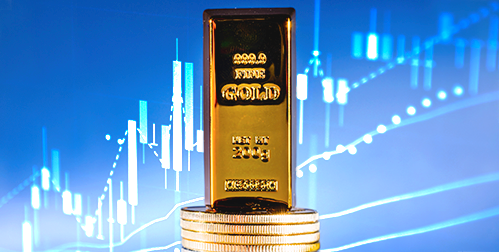Gold Demand Remains High
Gold just rose to a five-week high. The war in Europe, elevated inflation and the risk of a U.S. recession boosted demand for the safe haven asset. It rose to $1,993.07 per ounce after earlier hitting its highest price since March 11.1
Gold’s advance came despite new higher interest rates. The benchmark 10-year U.S. Treasury yields jumped to its the highest level since 2018. Typically, rising interest rates lower the demand for gold. Also, gold’s price continued to rally despite the strengthening of the US dollar. Any major advance in the greenback is supposed to limit rises in gold prices.
Investment analyst have stated that safe-haven demand has nullified these negative forces. It’s also possible that some central banks are using this opportunity to load up on bullion. Marios Hadjikyriacos, an analyst at XM, said, “The crippling sanctions on the Russian central bank made it clear that FX reserves are not as solid as gold in a crisis.”2
Factors Driving Gold Prices
There are several factors supporting the current high price of gold. Underpinning them all are the highest inflation rates in 40 years.
The first factor is the rising price of crude oil. A possible European embargo on Russian gas is pushing the cost of oil up. Any further rise in crude oil prices could raise inflation throughout the global economy.
Gold climbed following these increases in oil and natural gas. Inflation was already increasing due to elevated raw material prices. Now, record oil prices are fueling demand for gold as a hedge against accelerating inflation.
Secondly, gold prices have continued to rise due to the ongoing Russia-Ukraine conflict. Peace efforts between the two countries are floundering. Negative news regarding the Russia-Ukraine war creates fresh demand for ‘safe haven’ assets.
“Gold directly benefits from the Russia-Ukraine conflict inflation effect. Which are now more meaningful than direct military developments, in a market sense,” said Stephen Innes. Innes is a managing partner at SPI Asset Management. He continued to say that inflation is causing investors to buy physical gold in preparation for a recession.3
Covid is another factor. China’s strict Covid-led restrictions are further straining broken supply chains. They are also increasing market volatility. There is no clear information on when those restrictions may be lifted. Investors are turning towards the stability of gold in the face of such uncertainty.
Finally, analysts are anxiously awaiting the US International Investment Position data (US IIP) to come out this week. There is growing concern after last week’s disappointing inflation data. The IIP compares the country’s total assets to its total debts. It would indicate the status of the American economy.
At the end of 2020, Americans owed $14 trillion more to the rest of the world than the rest of the world owed to America. That’s 67 percent of U.S. GDP, up from about 50 percent at the end of 2019. And well above the 16 percent of GDP recorded a decade ago. Any further disappointing figures from the US government would create fresh demand for ‘safe haven’ assets. This would lead to a sharp upside bounce in the price of gold.4
By some accounts, gold prices SHOULD be moving downward. The Federal Reserve’s rate hikes promise lower inflation. However, reality is painting a different picture. Safe haven assets are being sought by investors. Global demand for gold continues to rise. If you want to secure your funds with precious metal, you should contact AHG to learn about opening a Gold IRA today.
Notes:
1. https://www.cnbc.com/2022/04/18/gold-markets-russia-ukraine-war-china-economy.html
2. https://www.marketwatch.com/story/gold-rises-toward-2-000-an-ounce-as-russia-ukraine-war-continues-11650285150
3. https://www.marketwatch.com/story/gold-rises-toward-2-000-an-ounce-as-russia-ukraine-war-continues-11650285150
4. https://www.brookings.edu/blog/up-front/2021/04/14/the-us-is-increasingly-a-net-debtor-nation-should-we-worry/






